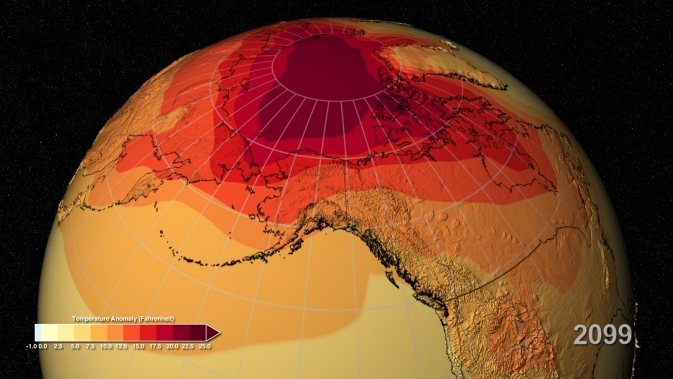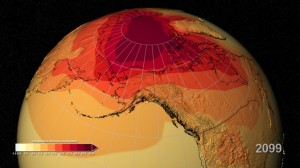March 17, 2014 – A new study appearing in the March 9 issue of Nature Climate Change provides detailed calculations on Earth’s climate future. I know that talking about climate change and atmospheric warming for most of us living in northeastern North America over this winter may seem counter-intuitive. But in truth the rate of CO2 increase is not slowing down and NASA studies are using a methodology called the transient climate response, to track the long-term impact of this greenhouse gas. Right now we are seeing an average CO2 increase of 1% per year. That means nearly a doubling by the end of the century. Applying this to NASA’s transient climate response model and you get an increase in global mean temperature by 1.7 Celsius (3.06 Fahrenheit) degrees. And that is averaging the temperature increase across the entire planet.
The study also looks at how aerosols, both naturally and human produced, are contributing to climate change. Aerosols can have both a positive and negative effect on atmospheric temperature. In the Northern Hemisphere, preponderantly industrial, we see the largest human contribution of aerosols. The study suggests that these aerosols may contribute an offsetting cooling effect countering to some degree the impact of CO2. That cooling is factored in to the projections mentioned in the previous paragraph.
The study’s projections are very much in line with those produced by the Intergovernmental Panel on Climate Change (IPCC) even taking into consideration the new research on human-produced aerosols and their impact on global warming. The conclusion – Earth will likely experience 20% more warming than what we have observed through the last 150 years of record keeping by 2099. And based on the NASA Center for Climate Simulation map of the Northern Hemisphere, seen below, that warming will be far greater in upper latitudes.











